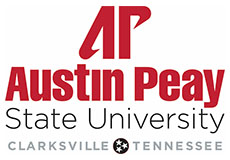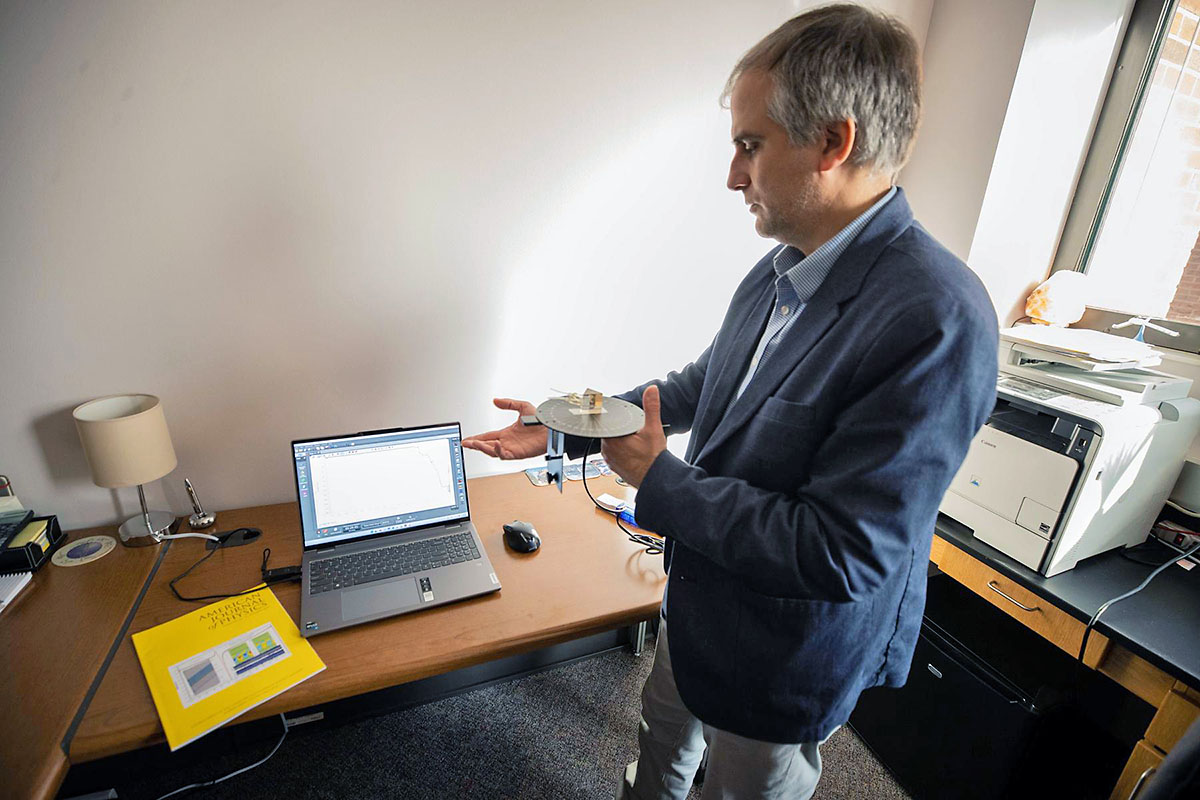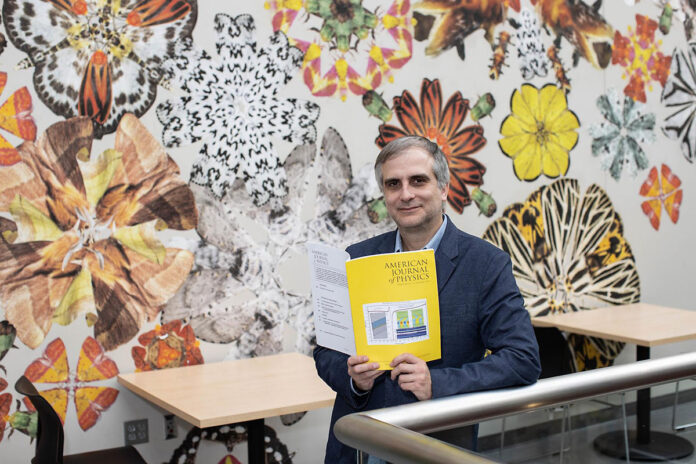 Clarksville, TN – In the About section of his website, Dr. E.U. Donev describes how his research and teaching often intersect.
Clarksville, TN – In the About section of his website, Dr. E.U. Donev describes how his research and teaching often intersect.
“I’ve always been interested in how to incorporate the things that I study in the research laboratory – which is how light interacts with nanoscale materials that are smaller than the wavelength of light – into the teaching laboratory,” said Donev, an assistant professor in the APSU Department of Physics, Engineering and Astronomy at Austin Peay State University (APSU). “And use those things to teach students not only about nanoscience but also about how to do science, how to conduct research.”
That desire not only has elevated the academic experience for Austin Peay State University students but also has formed the cornerstone of one of Donev’s recent publications. The paper – titled “Surface plasmon resonance sensing in the advanced physics laboratory” – is featured on the cover of the November edition of American Journal of Physics, a publication of the American Association of Physics Teachers.
Donev coauthored the paper with several of his former students, including Austin Peay student Zachary Givens. Other authors include Alaa Adel Abdelhamid, David Kerrigan, William Koopman, and Andrew Werner.
“One of the things that excites me about my work is involving students,” Donev said. “That’s how students distinguish themselves when they graduate – the type of extracurricular research activities that they have done. Meaningful research experiences are what graduate schools and employers look for in their applicants.”
Immersing Students in Physics

The paper describes in detail a suite of experiments and computations suitable for introducing upper-level undergraduate physics and engineering students to the field of nanoplasmonics, the study and applications of light interacting with metallic nanostructures roughly 1,000 times smaller than the thickness of a sheet of paper.
The product, as the article’s abstract notes, “is a tunable optofluidic device capable of detecting changes in a fluid medium as low as 0.002 refractive index units.” The device uses a thin gold film on a glass prism coupled to a microfluidic cell to set up surface plasmon resonance (SPR) sensing.
“This is a fairly simple project to set up for the students, and what I like about it is it’s very versatile,” Donev said. “You could do it in a couple of lab periods or over a summer. You could do a summer research project or a capstone semester-long project. You can set up the simple system and see the effects of how light reflects from a gold film on a prism, and you can add sensing functionality to it. You can detect different liquids flowing through a microfluidic channel.”
The device uses SPR sensing to immerse students “in the rich physics of nanoscale optics and evanescent waves in constructing and operating a precision apparatus and in developing theoretical, analytical and numerical models to aid both in the physical understanding and engineering optimization of the SPR sensor,” according to the paper’s abstract.
The Essence of Physics Education
SPR sensing has become more commercially practical over the past two decades.
“But applying it to an undergraduate setting can be challenging because of the perceived cost of fabricating samples and the equipment required,” Donev said. “What we’ve shown is that it doesn’t have to be. You can get off-the-shelf components and assemble a very sensitive device for a few hundred dollars.”
He continued to work on the project to see if he could make a suite of experiments more accessible to universities and their students.
“The goal is always to introduce students to advanced experimental techniques, instrumentation and ways of thinking about physics,” Donev said. “You cannot get a full taste of what research is like until you get to the advanced lab where students are not necessarily given explicit instructions – where they must figure things out to solve problems. That’s the essence of physics education. We teach students how to solve problems.”
‘A Sense of Ownership’
Donev and his students honed the project over the last three years.
“For me, it’s a fairly long process to see pedagogically how these experiments fit within the curriculum and how the students perform, where they stumble, what mistakes they make and so on,” he said. “Basically, where can learning happen?”
And his students have reacted to the lessons.
“Once they get into it, the most gratifying reaction for me is when they start feeling a sense of ownership,” Donev said. “Then it becomes their thing. That’s exciting – to start manipulating things and moving things with confidence and start speaking the language of the field. That growth is at the core of the learning process, and it’s almost entirely on the student side.”
For More
You can see Donev and his students’ paper on the American Journal of Physics webpage. Austin Peay students, faculty, and staff have full access to the paper.



